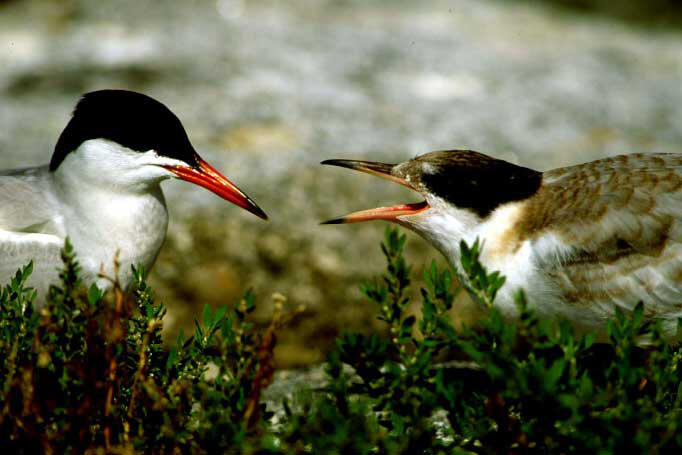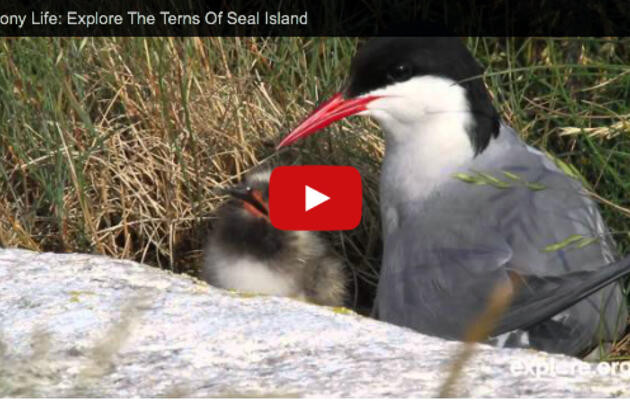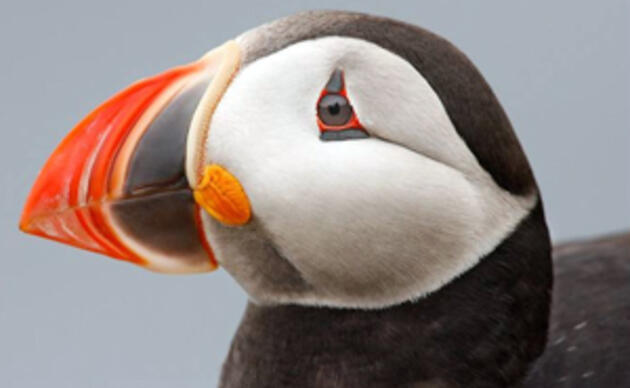The Common Tern (Sterna hirundo) is Eastern Egg Rock's most numerous species, with about 1400 pairs nesting on the island. Terns are related to gulls, but have pointed wings and forked tails, allowing them to fly very gracefully. As the chicks grow, they get more and more feathers and start to look like their parents.
Common Terns make their nests on the rocks at the edge of the grass on the island. They lay one to three eggs (usually three) and then incubate them for about three and a half weeks. After the chicks hatch, they are covered with down and can move about some, but stay near the nest. The parents go off to the ocean to collect fish and bring the fish back to the chicks. The chicks swallow the fish whole!
As the chicks grow, they get more and more feathers and start to look like their parents. It takes about four weeks for them to leave the nest—called fledging—after they hatch. In this time the parents bring a lot of food!
Common Terns are found along lake and seashores from Maine to the Rocky Mountains in Canada. They migrate as far south as South America for the winter. Roseate Terns (Sterna dougallii) and Arctic Terns (Sterna paradisaea) also nest on Eastern Egg Rock. They all look very similar, but skilled researchers learn to quickly distinguish them. Below are some hints on how to differentiate the three species.
Listen to the Calls of Common Terns
Listen to a Common Tern Chick's Begging Calls

Related
Learn about birds and take action
Adopt-A-Puffin
Adopt now and receive a Certificate of Adoption, along with a biography of "your" puffin!
Visitor Center
The Project Puffin Visitor Center (PPVC) is located at 311 Main Street in downtown Rockland, Maine. The center opened its doors officially on July 1, 2006.




